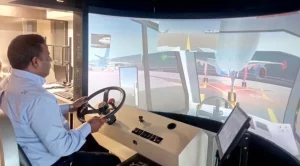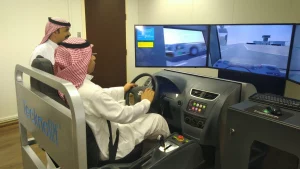India’s aviation industry in the last 9 years has witnessed a meteoric rise, fuelled by rising demands and the unwavering commitment to its growth through supportive policies. One such initiative is the Regional Connectivity Scheme- Ude Desh ka Aam Nagrik (RCS-UDAN) launched in 2016. The scheme aims to provide connectivity to unserved and underserved airports through the restoration of the existing airstrips and airports.
Post Covid the aviation industry has witnessed a spike in passenger demand. As of 4th December 2023, the aviation industry has seen:
- INR 3751 Cr of INR 4500 Cr has been utilised for the development of airports in the country since its inception.
- 517 RCS routes are operating, connecting 76 airports, including 9 Heliports and 2 Water Aerodromes.
- An upward of 1.30 Cr people have availed of the benefits of the scheme.
- INR1000 Cr has been allocated in the budget of 2023-24 for the revival and development of 50 additional aerodromes in the country.
The number of operational airports in the country has doubled from 74 (2014) to 148 (April 2023). This powerful shift has skyrocketed India to the forefront of the global aviation ecosystem, making India the third largest domestic aviation market in the world, after USA and China
Airside Safety Standards in India
The Ministry of Civil Aviation is responsible for constructing national policies and programs for the development and regulation of the Civil Aviation sector in India. This Ministry exercises administrative control over attached and autonomous organisations like the Directorate General of Civil Aviation (DGCA), Bureau of Civil Aviation Security (BCAS) and Indira Gandhi Rashtriya Uran Akademi and affiliated Public Sector Undertakings like the Airports Authority of India (AAI).
- DGCA primarily deals with safety issues like air transport services to/from/within India and the enforcement of civil air regulations, air safety, and aircraft safety standards.
- The Airports Economic Regulatory Authority of India regulates the tariff for aerospace services, determines airport charges for services provided at major airports, and monitors their performance.
- BCAS is responsible for laying down standards and measures concerning the security of civil flights at international and domestic airports in India.
- AAI was formed by merging the International Airports Authority of India and the National Airports Authority to accelerate the integrated development, expansion, and modernization of the operational, terminal, and cargo facilities in the country following international standards.
Simulator Training for Airside Safety with Tecknotrove
Simulation training has played a significant role in the Aviation Industry specifically when it comes to airside safety. Training in a simulated world ensures that the ground handling crew are equipped with the necessary skills and knowledge to maintain safety on airside and achieve optimum turnaround time. With busy aircraft movement, ground handling operations, and various vehicles navigating the apron area, manoeuvring area and taxiway, the potential for incidents or accidents is ever-present.
Simulator training by Tecknotrove Airport Driving Simulator offers an opportunity to familiarise the airside operators with a dynamic and immersive learning experience. Simulator training allows participants to familiarise themselves with airside operations , increase FOD awareness , practise emergency scenarios and refine their decision-making abilities in a controlled yet realistic environment. A detailed report is generated on the operator’s performance post each session.

- Aircraft Pushback Training Simulators: The training simulator is specially designed to train effectively and evaluate push and towing operations at the airside and hangers. The simulator accommodates tow bar and tow barless equipment.

- Cargo Loader and High Loader Simulator: The simulator is an advanced training tool to not just train but also to evaluate operators on safe loading operations. The simulator is compatible with a variety of cargo loader models. This helps in training the operators on both main and lower deck techniques on a variety of aircraft types under complete safety.
- Baggage Tractor Simulator: The simulator is an advanced training tool to effectively train and evaluate baggage tractor operators in a realistic airside environment. The simulator duplicates the actual dynamics and controls. The simulator works in two modes: electric baggage tractor and conventional tractor.

- Airport Driving Simulator : TecknoSIM Airside Safety Simulator allows airside drivers to be trained on actual airport driving conditions, GSE driving, FOD identifications, and handling emergencies without any danger and cost involved. The simulation supports equipment like fire trucks, drivers, catering trucks, fuel tankers, and much more.
STRATEGIC TRAINING SOLUTIONS FOR AIRSIDE SAFETY TRAINERS
Digital Twins of Airside : Tecknotrove team recreate an exact replica of your airside aprons, terminals, airport buildings, hangars, taxiways, and runways. Digital Twin allows airports , airlines and GHe operators to train your airside personnel and ground staff in a virtually realitic environment . Digital twin of airport when integrated witht the simulator allows the operators to familiarise themselves with airside routes and operations , identify FOD and learn emergencies procedures.
Clinical Testing System : This is a specially designed Psychometric Operator Assessment Test ensure that the ground handling operators are suitably qualified for their roles. Hardware set includes Desktop Simulator with Headphones and a Response Panel
The software test is conducted for 6 attributes:
- Anticipation Test: To test the driver’s skill to anticipate the oncoming vehicle/hazard.
- Judgement Test: To test the driver’s peripheral view on the road on both sides of the vehicle/ machine.
- Reaction Test: To test the response time of the driver.
- Driving Aptitude Test: To test the aptitude level of the driver.
- Colour-blindness Test: To test the driver’s ability to distinguish colours.
- Vision Test: To test the driver’s vision to read instructions.
TRAINING SIMULATORS FOR AIRSIDE SAFETY – USE CASES
- Celebi Aviation Holding set up an Aviation Academy in Turkey with VR solutions from Tecknotrove to train its operators on Aircraft inspection. The VR module enables training multiple wide body and narrow body aircrafts from Boeing and Airbus. Such training on line maintenance engineers and turaound managers with precision is difficult and expensive with actual aircrafts.
- Qatar Airways uses training simulators from Tecknotrove for multiple applications like line maintenance teams, cabin crew, and ground handling training. Tecknotrove developed a custom-built airside environment with a wide range of virtual aircraft from Boeing and Airbus to enable training in a hyperrealistic virtual environment to reduce training time and cost.
- Delhi International Airport Limited operated by GMR is the first airport in India to introduce Airside Safety Training Simulators for driving, training, and testing operators on the airfield of IGIA. The simulators are designed by Tecknotorve and customised with a highly realistic, virtually mapped terrain of Delhi Airport and customised for operators to train and test drivers on specific scenarios at the Indira Gandhi International.
- Japan Airlines uses VR for better training of their aviation mechanics and to improve their skills. The VR training solution helps the maintenance engineers and mechanics get familiar with the engine’s run-up procedure.
- SIA Engineering Company is amongst the largest independent MRO that has heavily invest in next-generation training simulators for airside safety , including training simulators and VR solutions from Tecknotrove that can simulate realistic scenarios in a safe and controlled environment. They use the technology to train their pushback operators, baggage handlers, airside drivers, and line maintenance teams to improve the safety and the aircraft turnaround times.
- SATS introduced AR at the Singapore Changi Airport for its 600 employees. With the help of AR glasses, the ramp handling workers scan QR codes placed on the cargo containers to see the baggage loading instructions (flight number, placement, location, etc.) in real-time. SATS estimated a shortened time of 15 minutes for an average twin-aisle jetliner as workers won’t have to use paper and will have complete knowledge of the cargo due to the AR
- At Tecknotrove, we have been successfully developing training simulators for Airside Safety since 20 years that enable Airlines, Airports & Ground-handling companies to improve their performance and aircraft turnaround time on the Airside, while reducing risks without depending on external factors. All in a safe way!Tecknotroves in-house simulation development and manufacturing capability enables us to develop the most affordable and customised training solutions to solve critical problems. We work closely with our clients to ensure their simulators are best suited for their requirement and updated with the latest simulation technology to help them get the best possible return on investments (ROI). To request a demo or speak to us about your requirements contact our simulation experts on sales@tecknotrove.com

